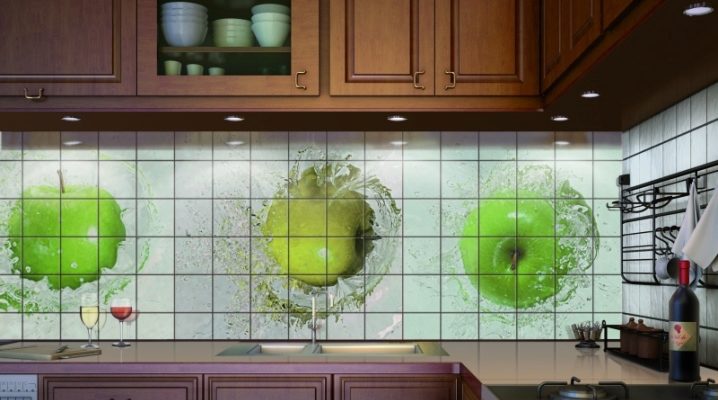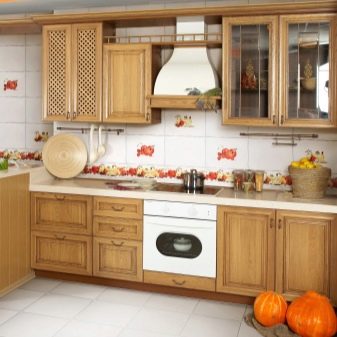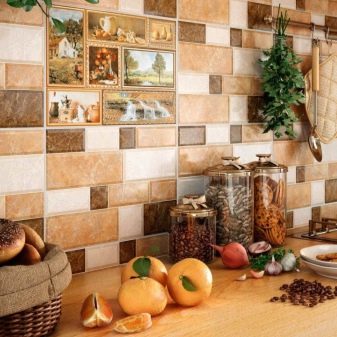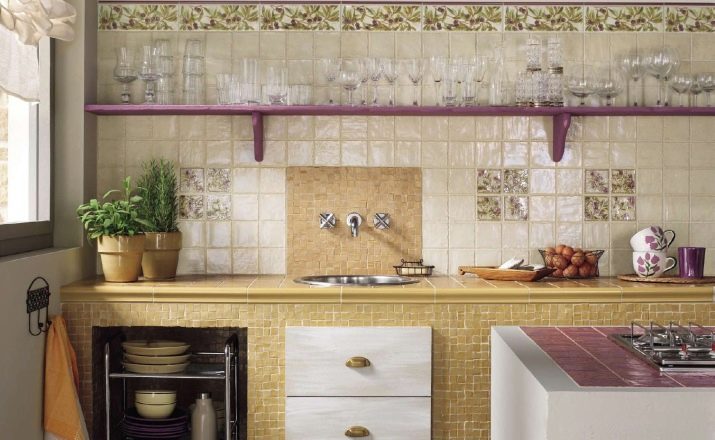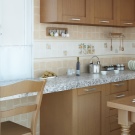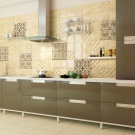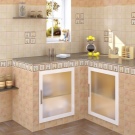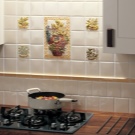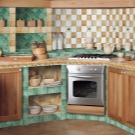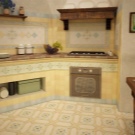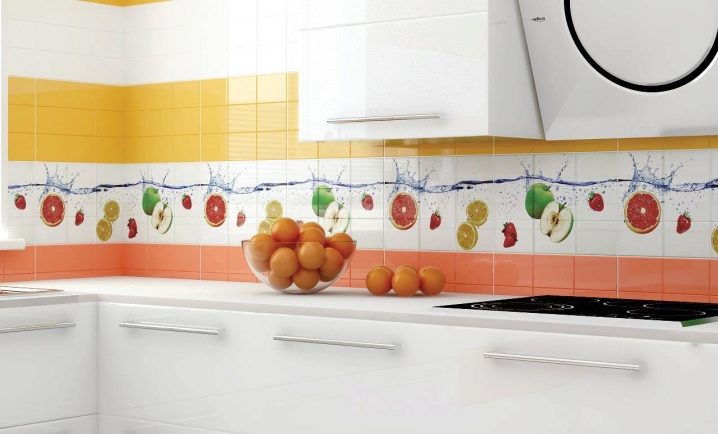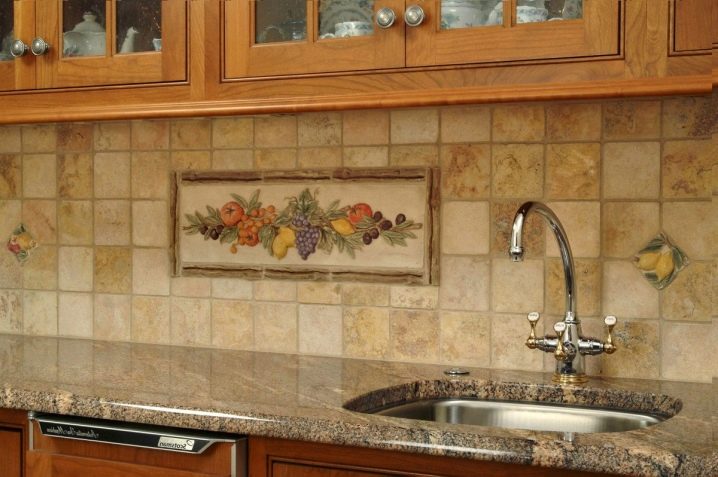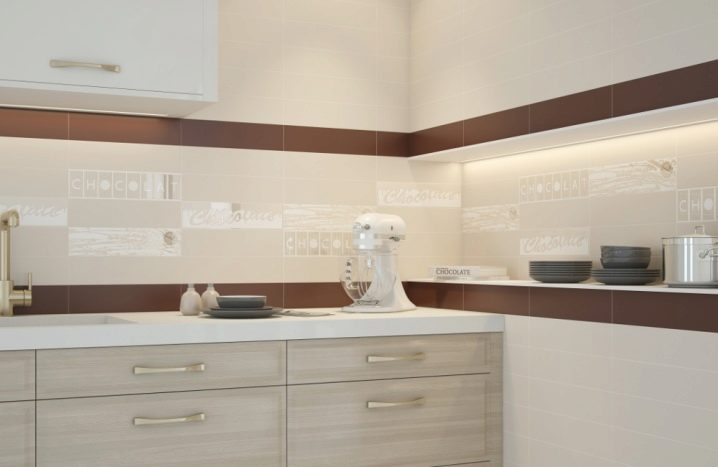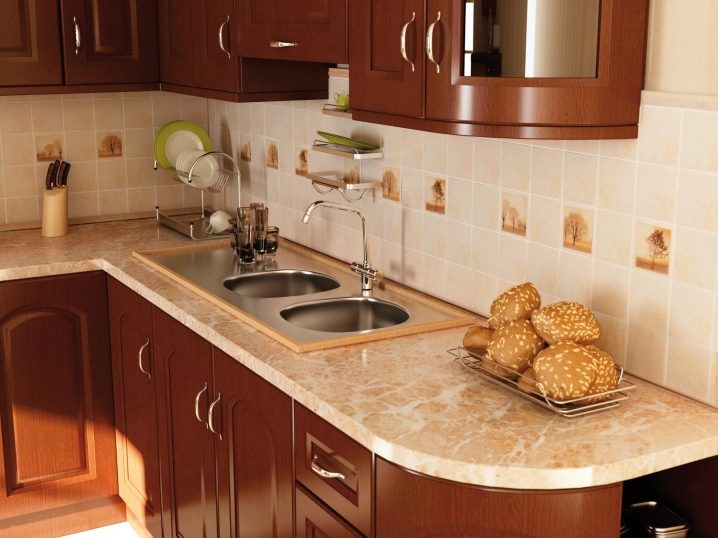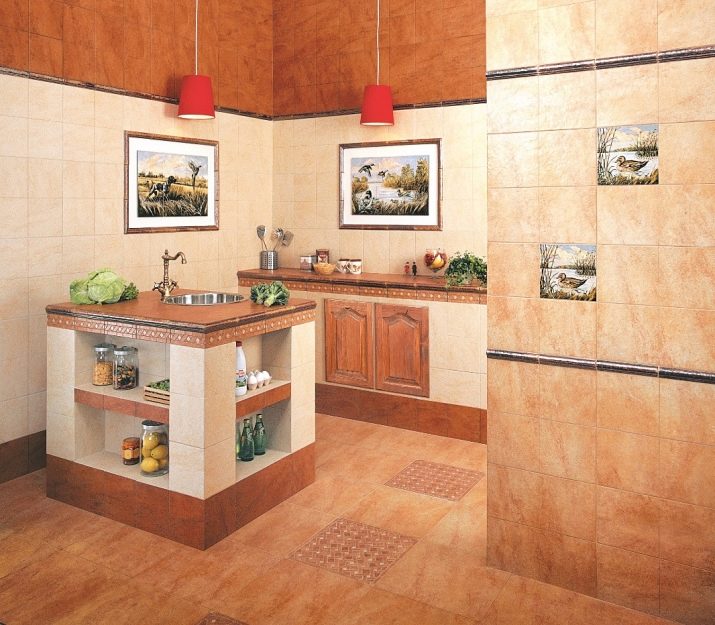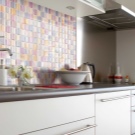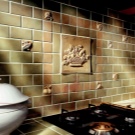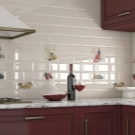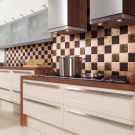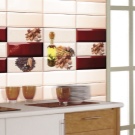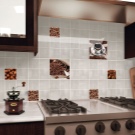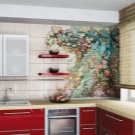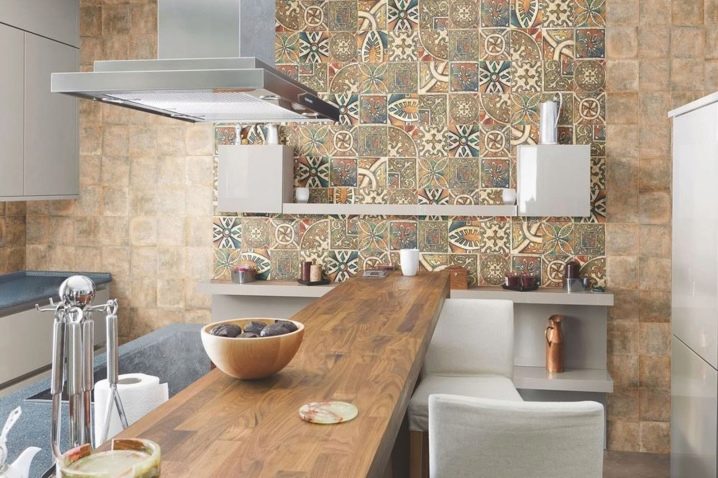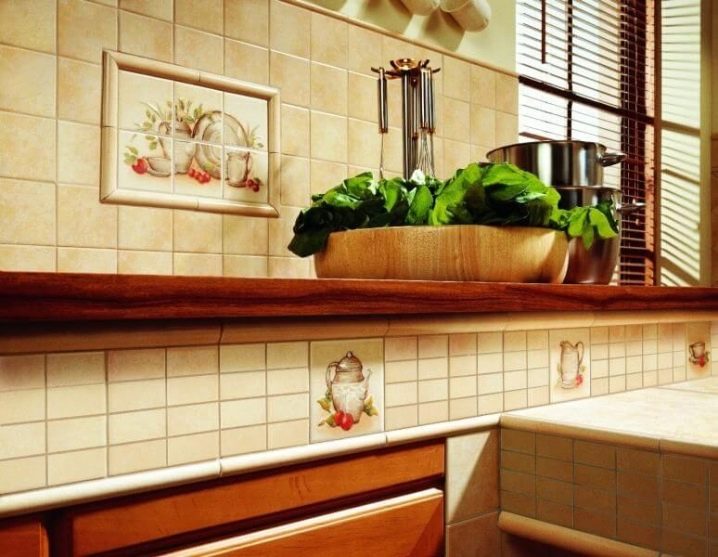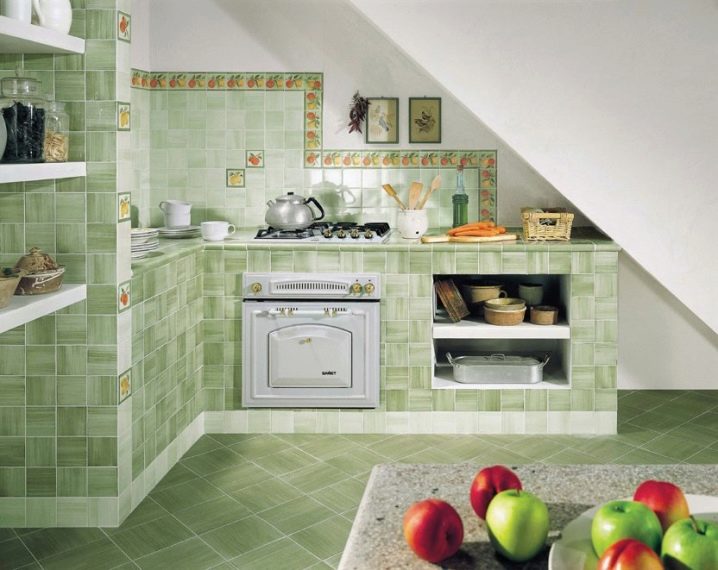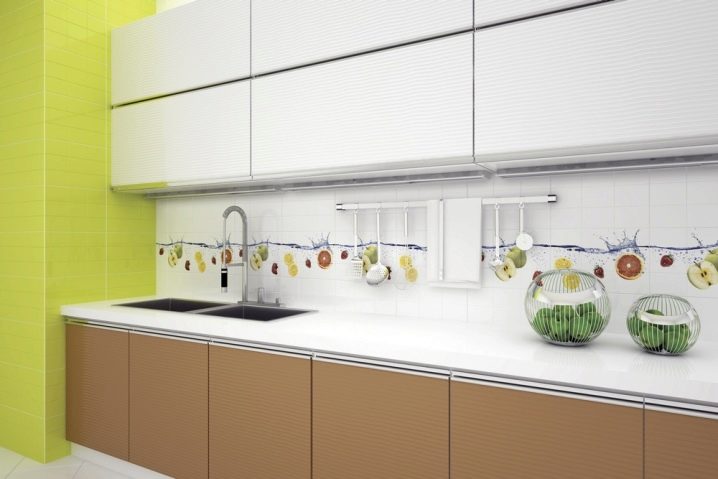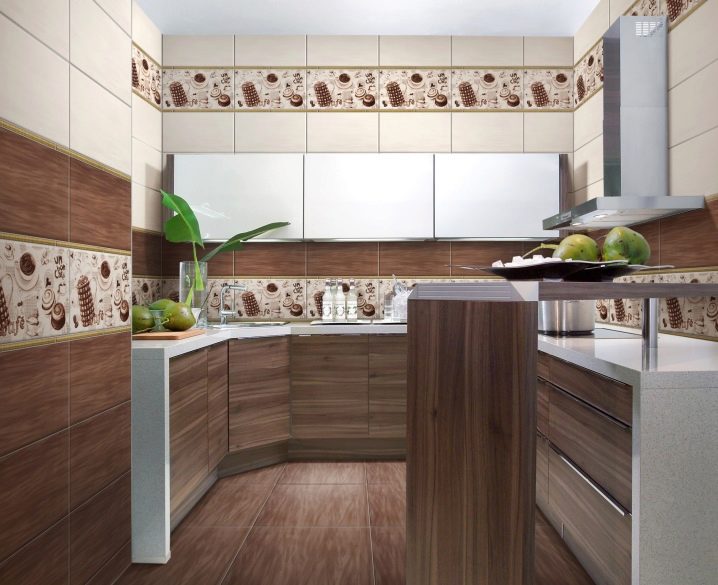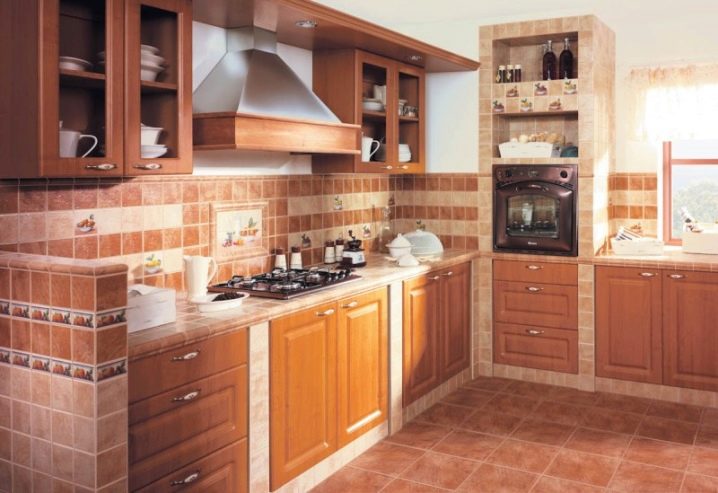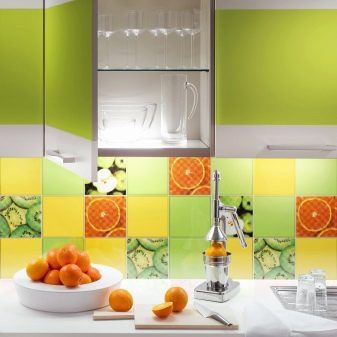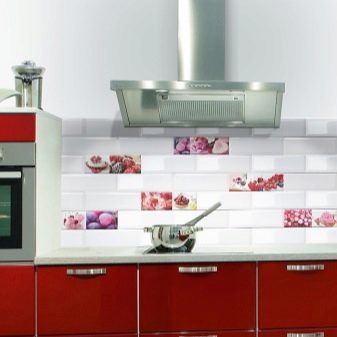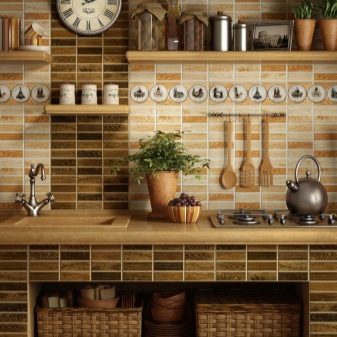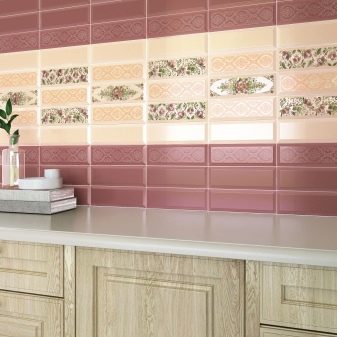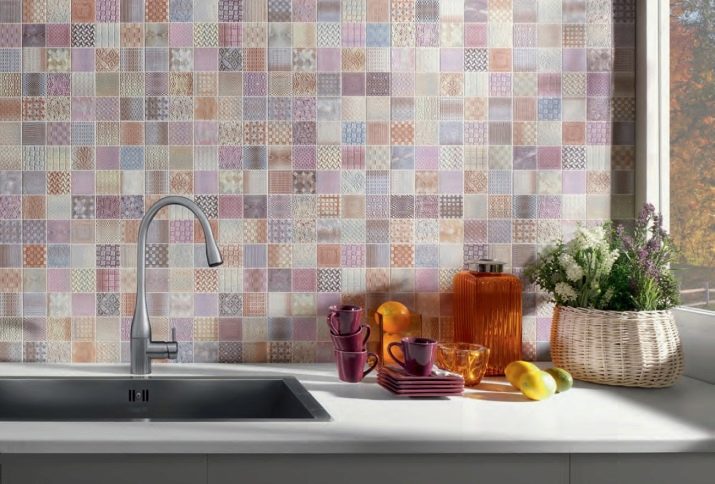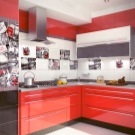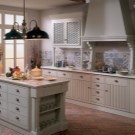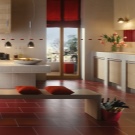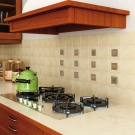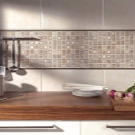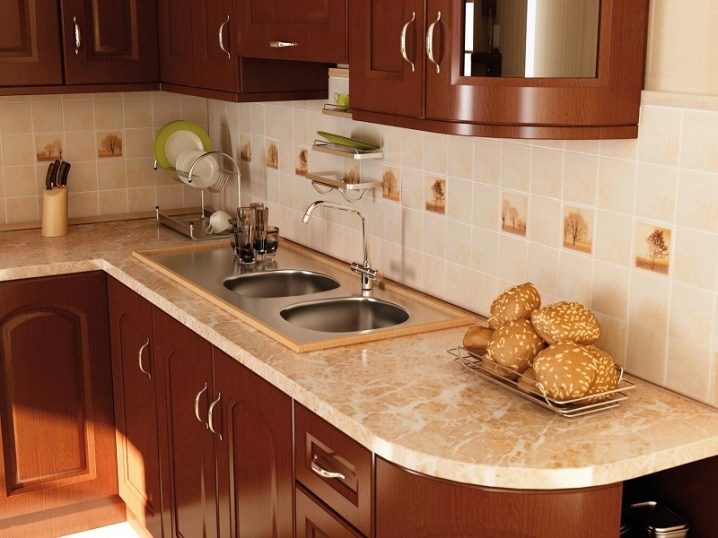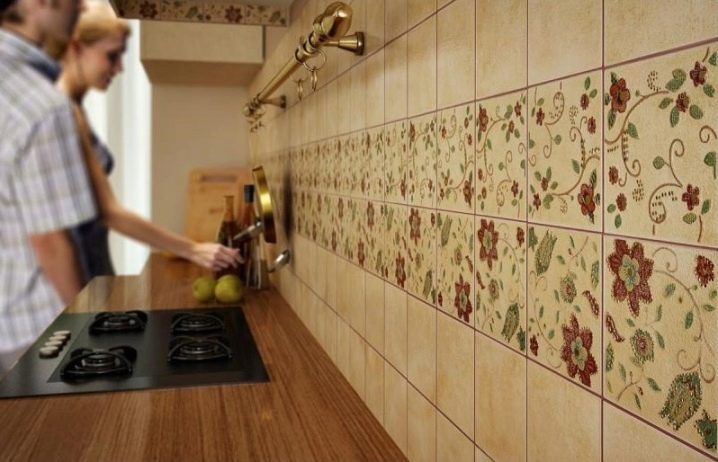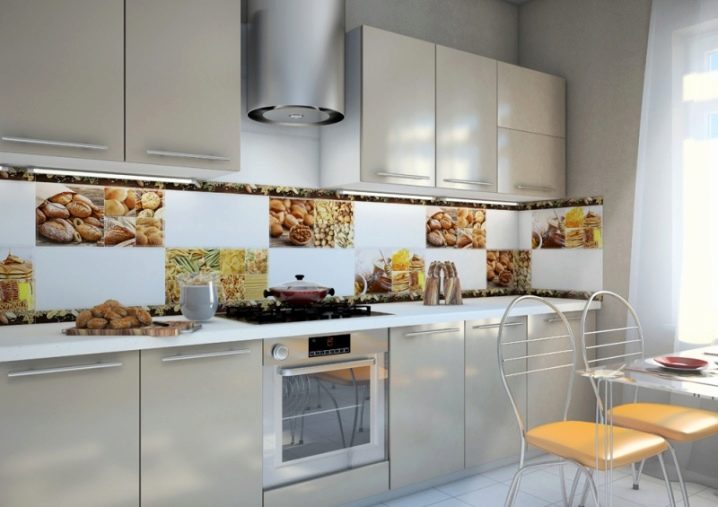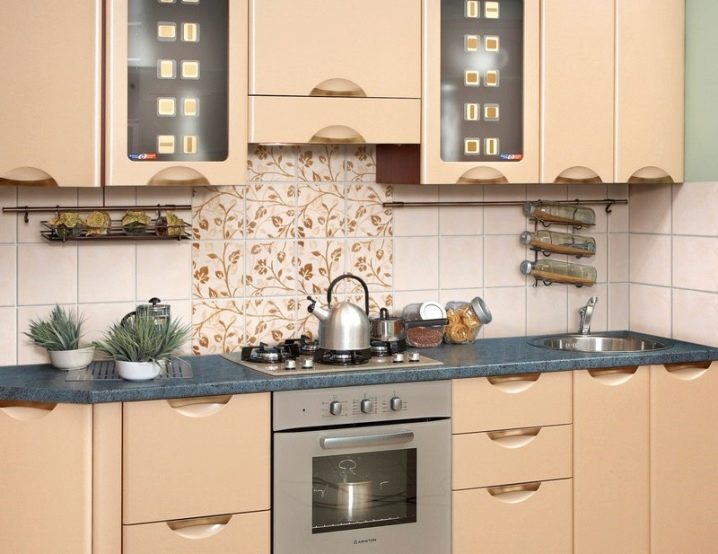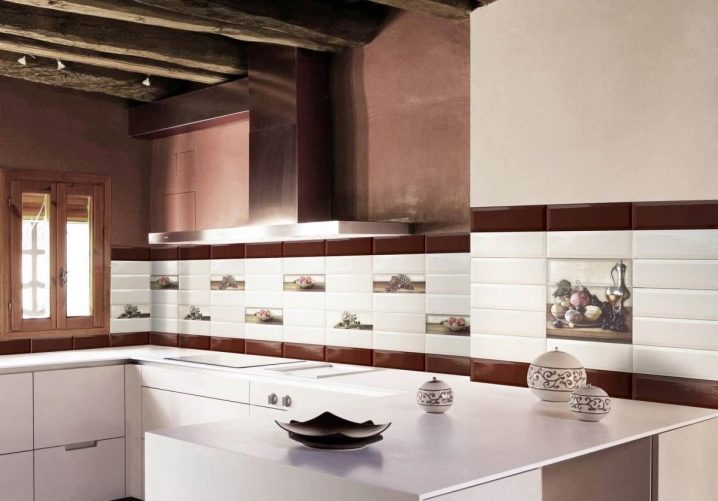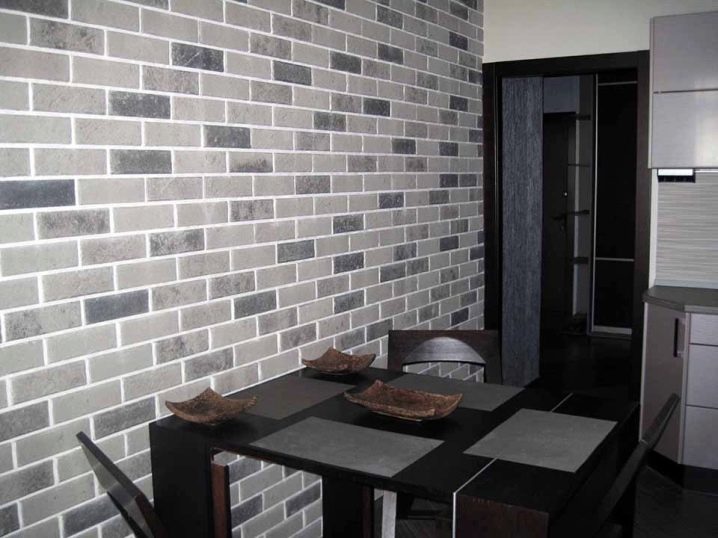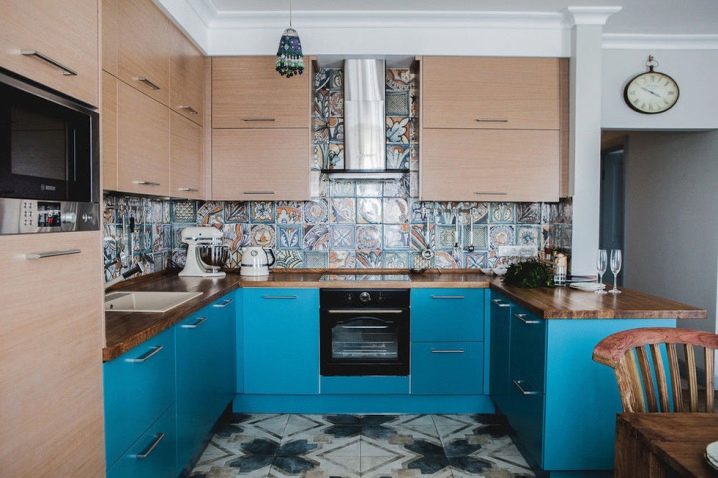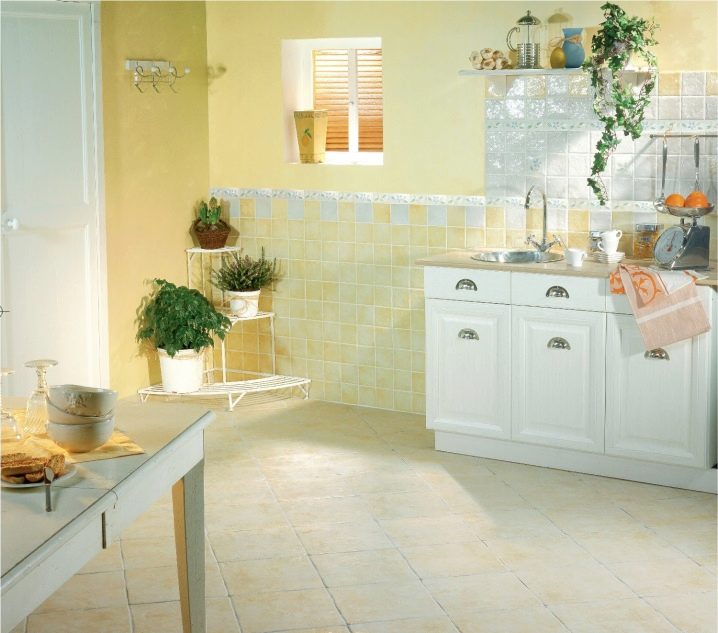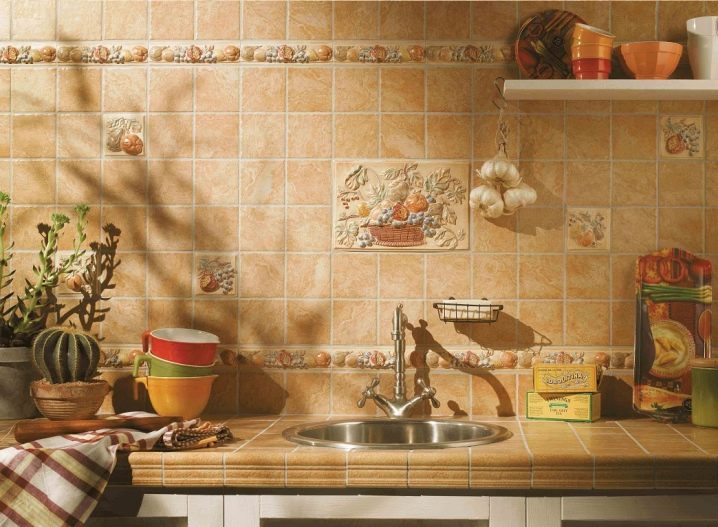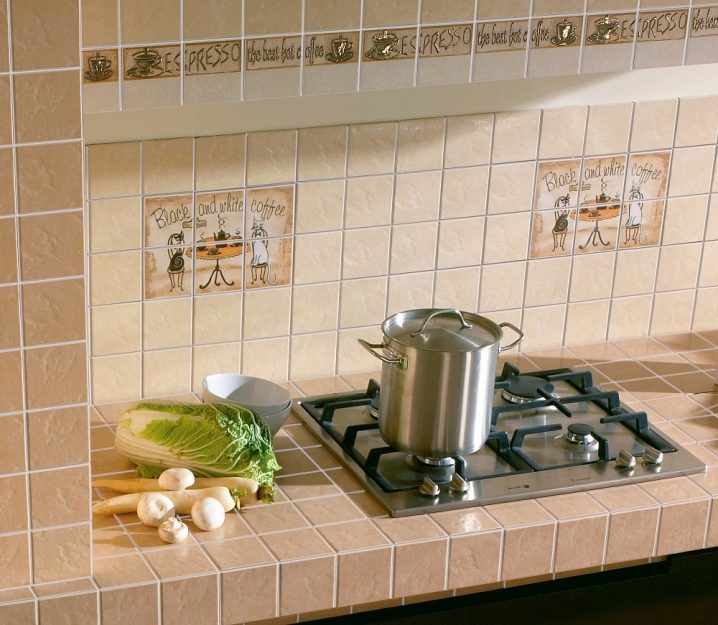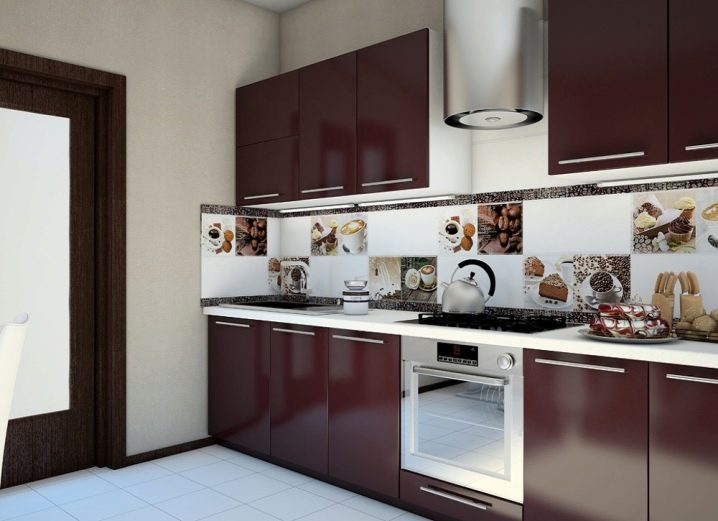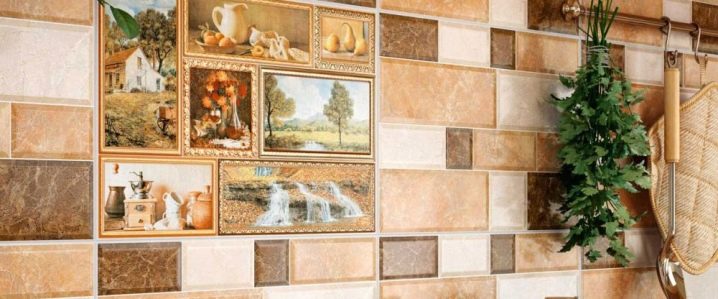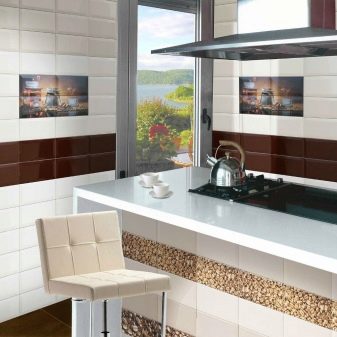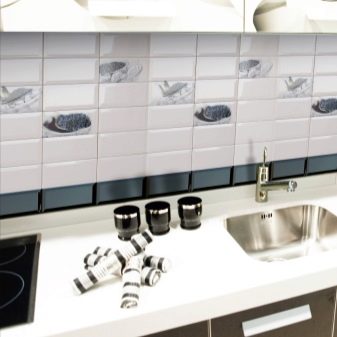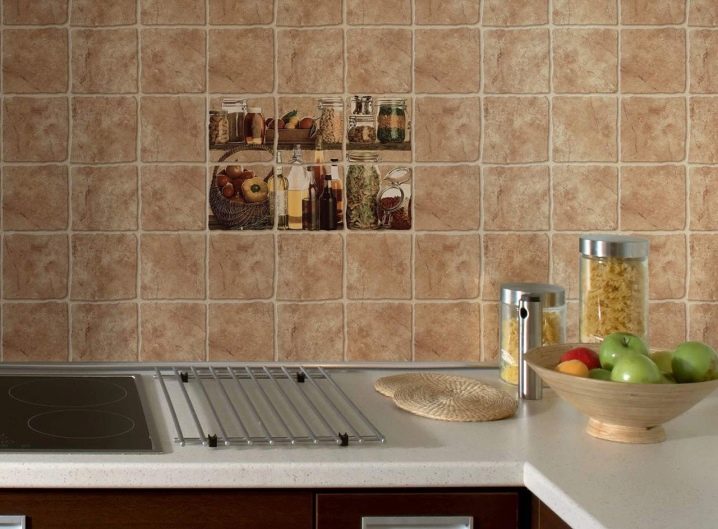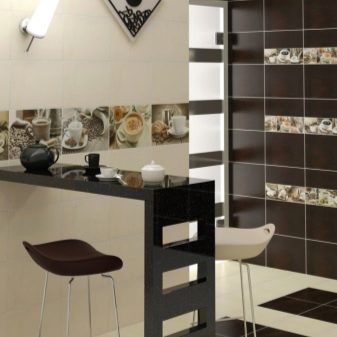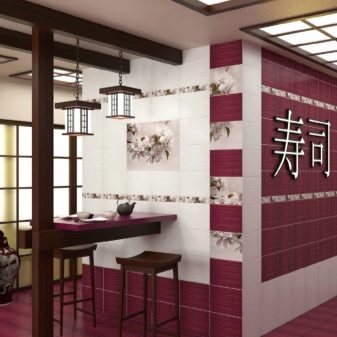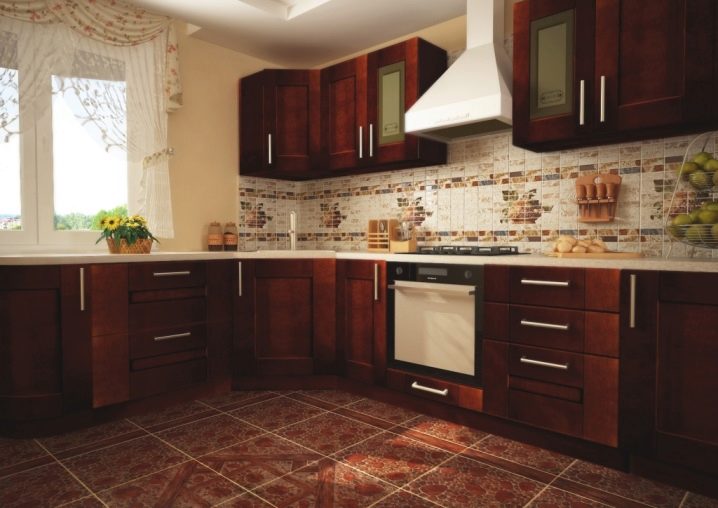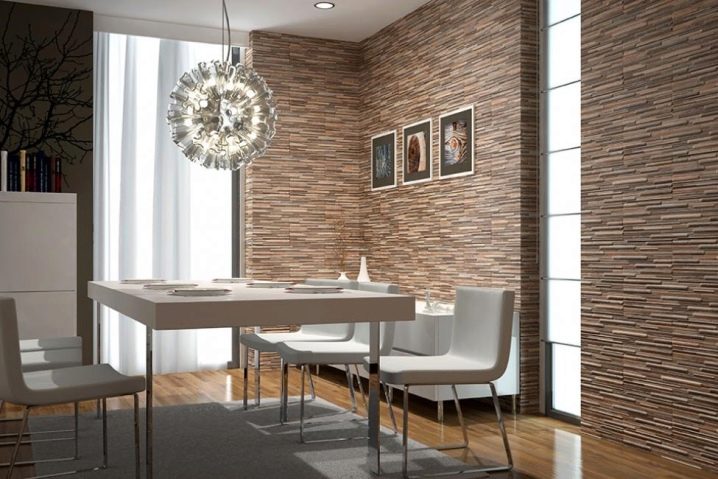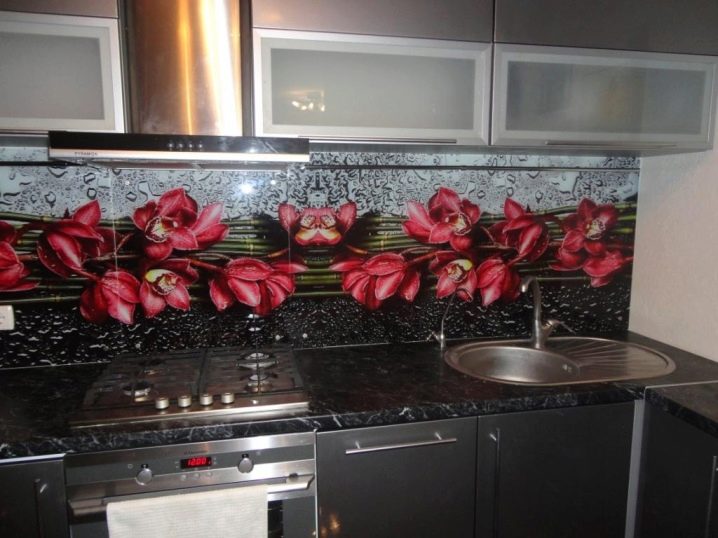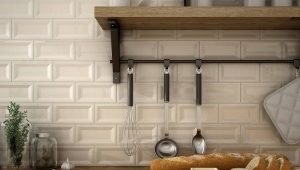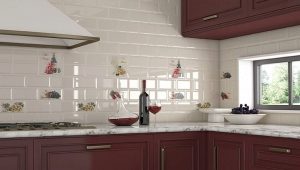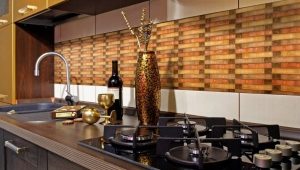Ceramic tiles for the kitchen
Features and benefits
Ceramic tile is one of the main finishing materials for the kitchen. Many prefer to use it in this room partially, covering only the apron in combination with wallpaper, paint, polymer panels. Others trim it all the free space, including the walls and ceiling. Ceramic tiles for the kitchen has the following advantages:
- strength;
- resistance to moisture and high temperatures;
- easy to clean;
- has a variety of patterns and colors.
Among the shortcomings, we can single out only the high cost of the material and the complexity of the installation, which will require the work of a specialist. But quality laid tile will serve in the kitchen for more than a decade.
Kinds
The most common type of kitchen tiles on the wall - with a glossy surface. It is easy to clean, and the shine from it adds a certain amount of light to the room and visually increases the space.But on the white glossy tile more visible stains from the stains of water and fat. For an apron above the working surface, this option is most often chosen.
Another type of wall tiles that are used in the kitchen is matte. Its surface is rough to the touch, can have original textures that can be combined with each other. Since the matte surface is not as slippery as gloss, this variant is also used for the kitchen floor.
Spray tile is a special variety, the surface of which is lined with decorative abrasive particles. The view with this finish will be original and attractive, but the cost of the material is much higher. You can combine samples of matte, glossy and coated tiles, creating a stylish interior.
According to the degree of protection from exposure to chemicals, tile can be of the following marking: AA, A, B, C, O, where the first type is the most protected, and the latter is not stable at all. For kitchen conditions, it is optimal to choose the types of tile A or AA, which is 3-4 mm thick and is not exposed to various household cleaning products and detergents.
For walls and an apron in the kitchen, there are varieties of tiles with dimensions of 10x10, 20x20 and 20x30 cm. Square sizes 30x30 cm and large can be laid on the floor.
Materials
Ceramic tiles are made from sand, clay and minerals, by firing and glazing. This material is the cheapest and is represented by the most diverse colors. Porcelain stoneware is more expensive than regular ceramics, but much stronger, withstands a lot of weight and is not susceptible to moisture absorption. The tile from this material is best to install on the kitchen floor.
Stone tiles, made from natural materials, have a very sophisticated look and distinct textures. But the appearance of the stone itself is able to visually reduce the space, so you should not lay out the entire area of the wall or floor in such a grade. You can, for example, apply it only to the apron area, the tabletop is also sometimes covered with such tiles.
Glass tile is made of mineral glass, can be transparent, translucent, colored, matte and glossy. Due to the smooth surface, it is easy to clean, usually used means for washing windows.It can be used to decorate individual fragments of a wall or an apron, combining it with a regular karmic one. Then in the kitchen creates a special flavor of the walls, which sparkles and shimmers.
Color solutions
White tile is universal for the kitchen with almost any color design. It is suitable for any furniture, will create comfort when working, will bring more light into the room. For her, you can use vinyl stickers, which are then easily removed or replaced.
Often for a kitchen apron choose neutral colors of ceramic tiles: beige, light pink or dull blue. They visually increase the space, look good in combination with any kitchen set, especially the color of the tree. You can use tile colors that are slightly lighter or darker than the color of the tabletop.
Interesting in the design of the kitchen is the use of a contrasting tile of several colors. It is important to choose the right colors, combined with the details of the interior and not overdo it with their diversity.
For an apron above the table top you can pick up a simple drawing or a pattern for this color. Usually selected pale colors, fruits or abstract shapes.They can be engraved on individual tiles or stacked from several pieces.
There are several ways to build tiles:
- traditional - tiles of the same color are laid horizontally and evenly, the seams form straight lines;
- with offset - each top horizontal row is offset by half tiles, roughly what a brickwork looks like;
- diagonal - rows are located at an angle to the horizontal surface;
- chess - tiles of different colors alternate in a checkerboard pattern;
- kaleidoscope - usually selected tiles of 3 or more colors, which alternate in random order.
All these types of masonry can be used for kitchen walls or an apron, but different methods require different experiences and costs of work.
How to choose
First of all, a tile for the kitchen should be durable, suitable thickness - for walls it is 3-4 mm, the colors are uniform, without inclusions, edges without chips and cracks. It is necessary to put fragments together in advance and see how they form a pattern or a picture. This applies even to uniform color tiles, shades should be identical. When firing, the shade of ceramics may darken slightly or, on the contrary, lighten.Therefore, even the same look, but different batches can have slightly noticeable different shades.
The length and width in most cases are standard, so you can easily calculate the number of tiles for the required area, but you need to take into account the distance between the seams. Before buying, it is worth considering a small stock, if it is a simple and monochrome method of laying - then 5-10%, if it is a combination of several colors, diagonal or chess stacking, then it is worth buying with a margin of 15%.
To avoid unnecessary trimming of tiles in the process of laying, it is worthwhile to take into account all the proportions on the wall, floor or apron of the kitchen. Ideally, the apron will consist of only whole, uncut elements. But most often the tiles have to be cut, and for different sections of the walls, corner transitions and the floor it is generally a necessity.
It is important not only to choose a quality grade of tile, but also a reliable glue for it. From it may depend on how smooth and durable the wall in the kitchen will be. It is equally important to choose a reliable grout for inter tile joints. It must be protected from moisture, dirt, fungi and temperature changes. Over time, poor-quality inter-tile grouting or fugue sprinkles dirt and is exposed to other harmful factors in the kitchen, and the type of tile can deteriorate.It is best to select an epoxy-based composition for it.
Is it possible to paint
Painting ceramic tiles can be done if it has grown old and over time has lost its fresh look, if the seams have become dirty, if you want to make an additional decor. As the paint is best to apply oil or acrylic. It is possible to paint with a roller or a brush, having previously cleaned the surface with a damp sponge and soapy water.
Finish
Using ordinary white or beige ceramic tiles, you can create neat walls and an apron in the kitchen, which will be combined with the Provence interior. In this case, the pattern can be the simplest, it is not necessary to spend time on a complex laying, and the image of the room will noticeably change.
Recently popular decor made with clinker tiles. It has the appearance of old or fresh brickwork of various colors. So you can equip all open areas of the walls, and the kitchen will acquire a beautiful and elegant design.
Another popular type of modern finishes is with photo printing tiles. The technologies allow creating clear patterns on the glazed surface of ceramics with any bright colors,which will retain their freshness for a long time. Thus, you can create any favorite still life or photo panels.
How much is
The cost of tiles depends on the manufacturer and suppliers. Regular ceramic tile without spraying is considered the cheapest, a bit more expensive is ceramic with volumetric patterns and porcelain stoneware. The most expensive varieties are stone and glass tiles, variants with complex mosaics and three-dimensional panels.
In addition, the installation itself, if the work of an experienced specialist is chosen, can cost almost more than the building materials themselves.
Top Brands Review
Domestic manufacturer Keramin produces various varieties of affordable and excellent in quality. Despite the relatively low cost, these materials are reliable and durable.
Brand Kerama Marazzi for about 30 years engaged in the production of ceramic tiles and other products for a similar type of finish: inserts, corners, borders, panels.
Manufacturer Uralkeramika produces ceramic tiles of various rows, which is suitable for floors and walls in any kitchen.
Interkerama tiles are made using modern digital printing technology on smooth and embossed surfaces, so you can always choose an original pattern.
Manufacturer Absolut Keramika is famous for the production of its decorative tiles with complex patterns and color images.
The Cersanit Coctail brand produces durable and high-quality ceramic products, both monotonous and with patterns and embossed images.
The company Birch Ceramics offers an inexpensive and reliable tile of various colors and patterns, glossy and matte.
Tiles Jade-Ceramics have long enjoyed deserved popularity in the repairs in the kitchen.
Interesting solutions in interior design
Simple laying of tiles in the kitchen in the style of "Provence" is always fresh and relevant.
The brick tile in the form of brickwork looks original and fits well with the rest of the design.
Lined apron in the kitchen of tiles with photo printing can make an impression.
